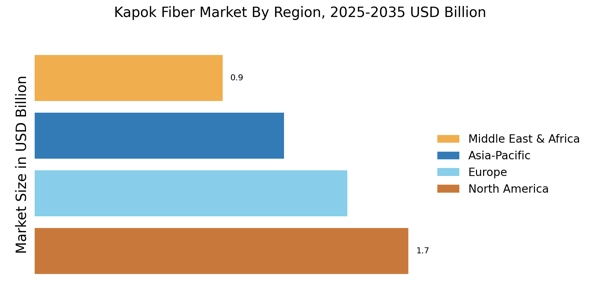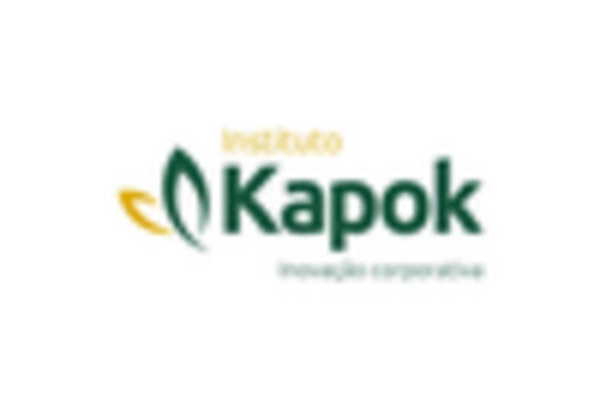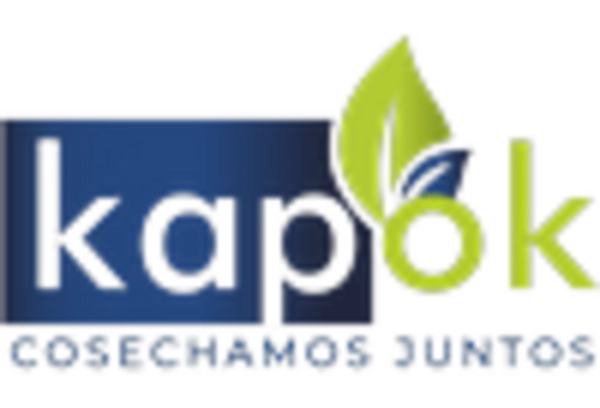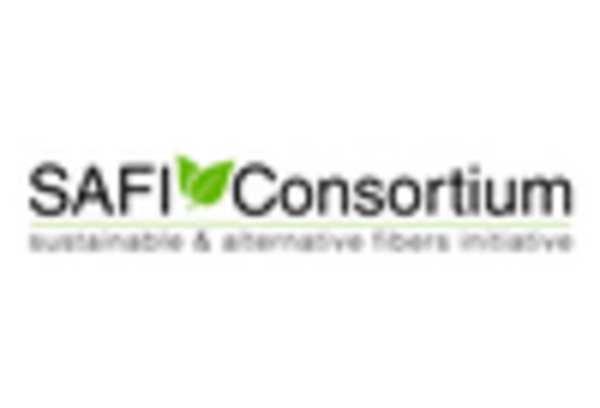Rising Demand in Textiles
The Kapok Fiber Market is witnessing a surge in demand within the textile sector. Kapok fibers are increasingly utilized in the production of clothing, upholstery, and other textile applications due to their lightweight and insulating properties. Recent statistics show that The Kapok Fiber Market is expected to reach a valuation of over 1 trillion dollars by 2025, with natural fibers gaining a larger share. This shift towards natural materials is likely to bolster the position of kapok fibers, as manufacturers seek to meet consumer preferences for sustainable and organic products. Consequently, the Kapok Fiber Market stands to benefit from this growing trend, potentially leading to increased production and innovation.
Sustainability Initiatives
The increasing emphasis on sustainability appears to be a pivotal driver for the Kapok Fiber Market. As consumers and manufacturers alike seek eco-friendly alternatives to synthetic materials, the demand for natural fibers like kapok is likely to rise. Kapok, being biodegradable and renewable, aligns well with the growing trend towards sustainable production practices. Recent data indicates that the market for sustainable textiles is projected to grow at a compound annual growth rate of approximately 9.7% over the next five years. This trend suggests that the Kapok Fiber Market could experience significant growth as more companies incorporate sustainable materials into their product lines, thereby appealing to environmentally conscious consumers.
Health Conscious Consumer Trends
The growing awareness of health and wellness among consumers is influencing the Kapok Fiber Market. Kapok fibers are hypoallergenic and resistant to mold and dust mites, making them an attractive option for health-conscious individuals. As more consumers prioritize products that contribute to a healthier lifestyle, the demand for kapok-based products, such as bedding and clothing, is likely to increase. Market Research Future indicates that the organic bedding market is expected to grow significantly, with natural fibers like kapok playing a crucial role. This trend suggests that the Kapok Fiber Market could see a rise in consumer interest, leading to expanded product offerings and market penetration.
Innovations in Processing Techniques
Technological advancements in processing techniques are poised to enhance the Kapok Fiber Market. Innovations such as improved extraction methods and fiber processing technologies may lead to higher quality kapok fibers, making them more appealing to manufacturers. Enhanced processing can also reduce production costs, thereby increasing the competitiveness of kapok fibers against synthetic alternatives. As the market evolves, these advancements could facilitate the development of new applications for kapok fibers, further expanding their market reach. The potential for innovation in the Kapok Fiber Market suggests a promising future, as companies strive to optimize production efficiency and product quality.
Government Support for Sustainable Materials
Government initiatives aimed at promoting sustainable materials are likely to impact the Kapok Fiber Market positively. Various countries are implementing policies and incentives to encourage the use of natural fibers in manufacturing processes. These initiatives may include subsidies for sustainable agriculture and funding for research into natural fiber applications. As governments recognize the environmental benefits of natural fibers, the support for kapok cultivation and processing could increase. This trend indicates a favorable environment for the Kapok Fiber Market, as enhanced support may lead to greater investment and development opportunities in the sector.


















Leave a Comment